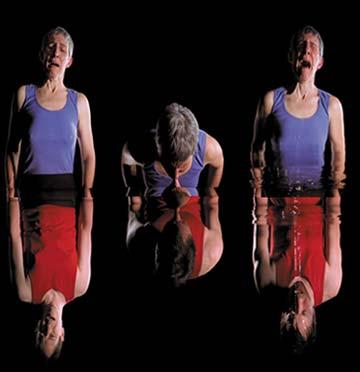Bill Viola
dal 21/10/2003 al 4/1/2004
Segnalato da
21/10/2003
Bill Viola
The National Gallery, London
The Passions. Bill Viola's new work explores the power and complexity of human emotions. Visually stunning and psychologically gripping, Viola's works are at the cutting edge of technology but they are also deeply rooted in the art of the past. Using actors, shown in silence and extreme slow motion, 'The Passions' probe and reveal the nature of overwhelming emotion.

The Passions
Bill Viola's new work explores the power and complexity of human emotions. Visually stunning and psychologically gripping, Viola's works are at the cutting edge of technology but they are also deeply rooted in the art of the past.
Using actors, shown in silence and extreme slow motion, 'The Passions' probe and reveal the nature of overwhelming emotion.
The Exhibition
Artists and writers have long been preoccupied with the challenge of depicting and arousing emotion. In 2000 Bill Viola began to explore these forces in his work, drawing on the art of the past for inspiration. A departure from his room installations with large projections and sound, the works in 'The Passions' series are intimate and silent. Displayed, for the most part, on digital flat panel screens which can be hung on walls like paintings, the works use extreme slow motion to open up emotional expression and reveal, in previously unseen ways, its power and complexity.
In making the works in 'The Passions' series Viola has drawn on many strands of influence. The first room of the exhibition contains works which suggest some of his sources. Occasionally the influence has been direct, 'The Quintet of the Astonished' - the earliest work in 'The Passions' series - took as its starting point the National Gallery's painting by Bosch of 'Christ Crowned with Thorns'.
Bill Viola
Born in New York in 1951, Bill Viola is one of the world's leading video artists. He has been making video art since 1970, when the first portable cameras and recorders became available. His work has ranged from single videotapes to immersive architectural video installations including video projections, sound and sometimes physical objects. Deeply involved in Buddhism, Viola's preoccupations have always been the inner or spiritual-self and the boundaries of consciousness. Since the death of his parents and birth of his children in the 1990s his work has often drawn on his own life to explore recurring themes of birth, death, self-discovery and personal transformation.
Viola lives and works in Long Beach, California with his wife, collaborator and manager Kira Perov and their two children.
Exhibition opening hours:
Every day 10am-6pm, Wednesdays until 9pm.
Last admissions 5.15pm (8.15pm Wednesday).
The exhibition is accompanied by a fully illustrated catalogue produced by the J. Paul Getty Museum: hardback £57.50; paperback £34.50. Both titles are available from National Gallery Shops, by Mail Order (tel: +44 (0)20 7747 2870) or from the Online Shop.
The exhibition has been organised by the J. Paul Getty Museum, Los Angeles in collaboration with the National Gallery.
For any further information about the exhibition please ask at the Information Desks or call 020 7747 2885.
The National Gallery
London



